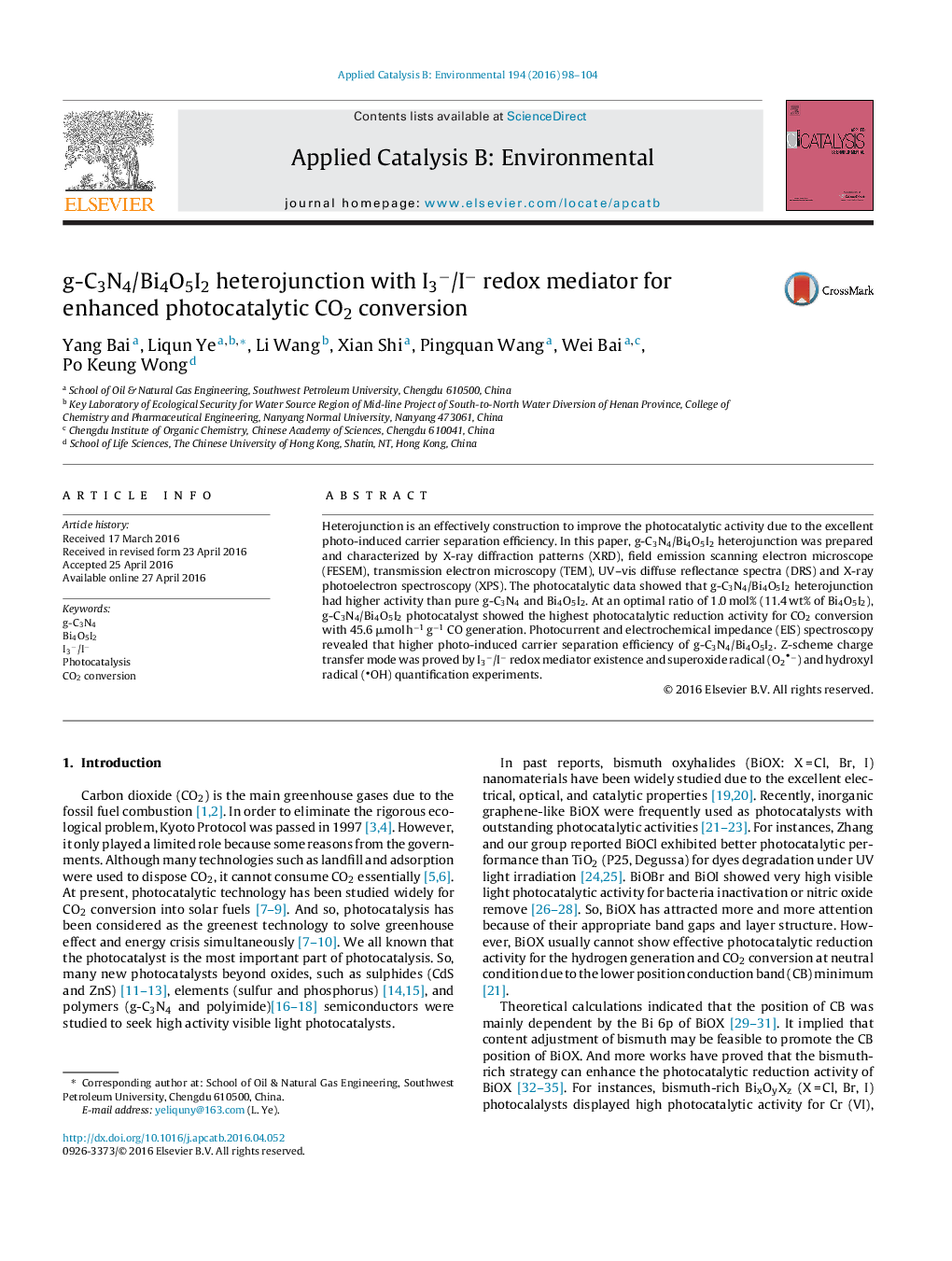| Article ID | Journal | Published Year | Pages | File Type |
|---|---|---|---|---|
| 44790 | Applied Catalysis B: Environmental | 2016 | 7 Pages |
•g-C3N4/Bi4O5I2 photocatalyst with I3−/I− redox mediator was prepared.•g-C3N4/Bi4O5I2 showed excellent photocatalytic activity for CO2 conversion.•I3−/I− redox mediator assisted Z-scheme mechanism for g-C3N4/Bi4O5I2.
Heterojunction is an effectively construction to improve the photocatalytic activity due to the excellent photo-induced carrier separation efficiency. In this paper, g-C3N4/Bi4O5I2 heterojunction was prepared and characterized by X-ray diffraction patterns (XRD), field emission scanning electron microscope (FESEM), transmission electron microscopy (TEM), UV–vis diffuse reflectance spectra (DRS) and X-ray photoelectron spectroscopy (XPS). The photocatalytic data showed that g-C3N4/Bi4O5I2 heterojunction had higher activity than pure g-C3N4 and Bi4O5I2. At an optimal ratio of 1.0 mol% (11.4 wt% of Bi4O5I2), g-C3N4/Bi4O5I2 photocatalyst showed the highest photocatalytic reduction activity for CO2 conversion with 45.6 μmol h−1 g−1 CO generation. Photocurrent and electrochemical impedance (EIS) spectroscopy revealed that higher photo-induced carrier separation efficiency of g-C3N4/Bi4O5I2. Z-scheme charge transfer mode was proved by I3−/I− redox mediator existence and superoxide radical (O2−) and hydroxyl radical (OH) quantification experiments.
Graphical abstractI3−/I− redox mediator assisted Z-scheme mechanism for enhanced photocatalytic CO2 conversion over g-C3N4/Bi4O5I2.Figure optionsDownload full-size imageDownload as PowerPoint slide
